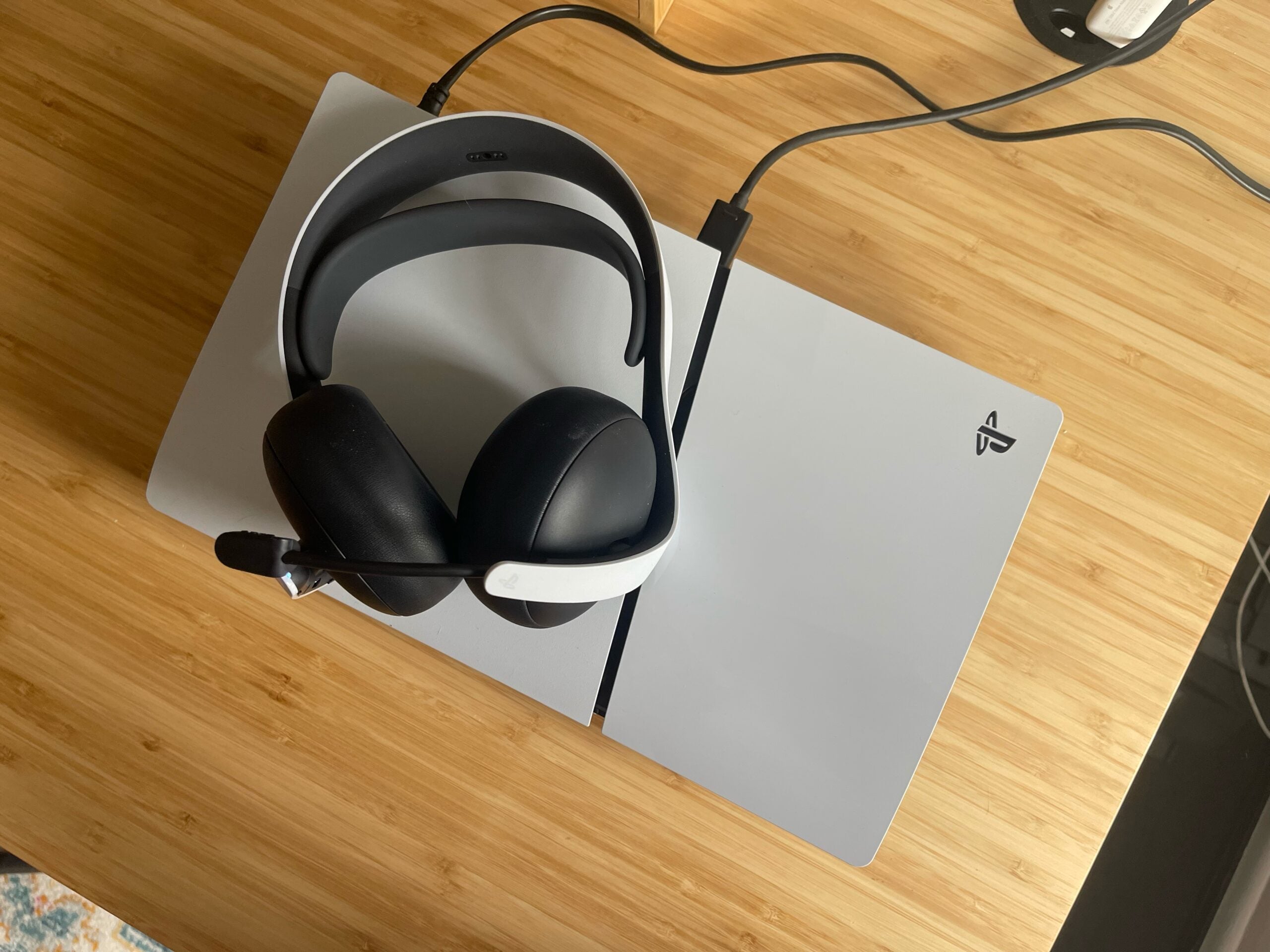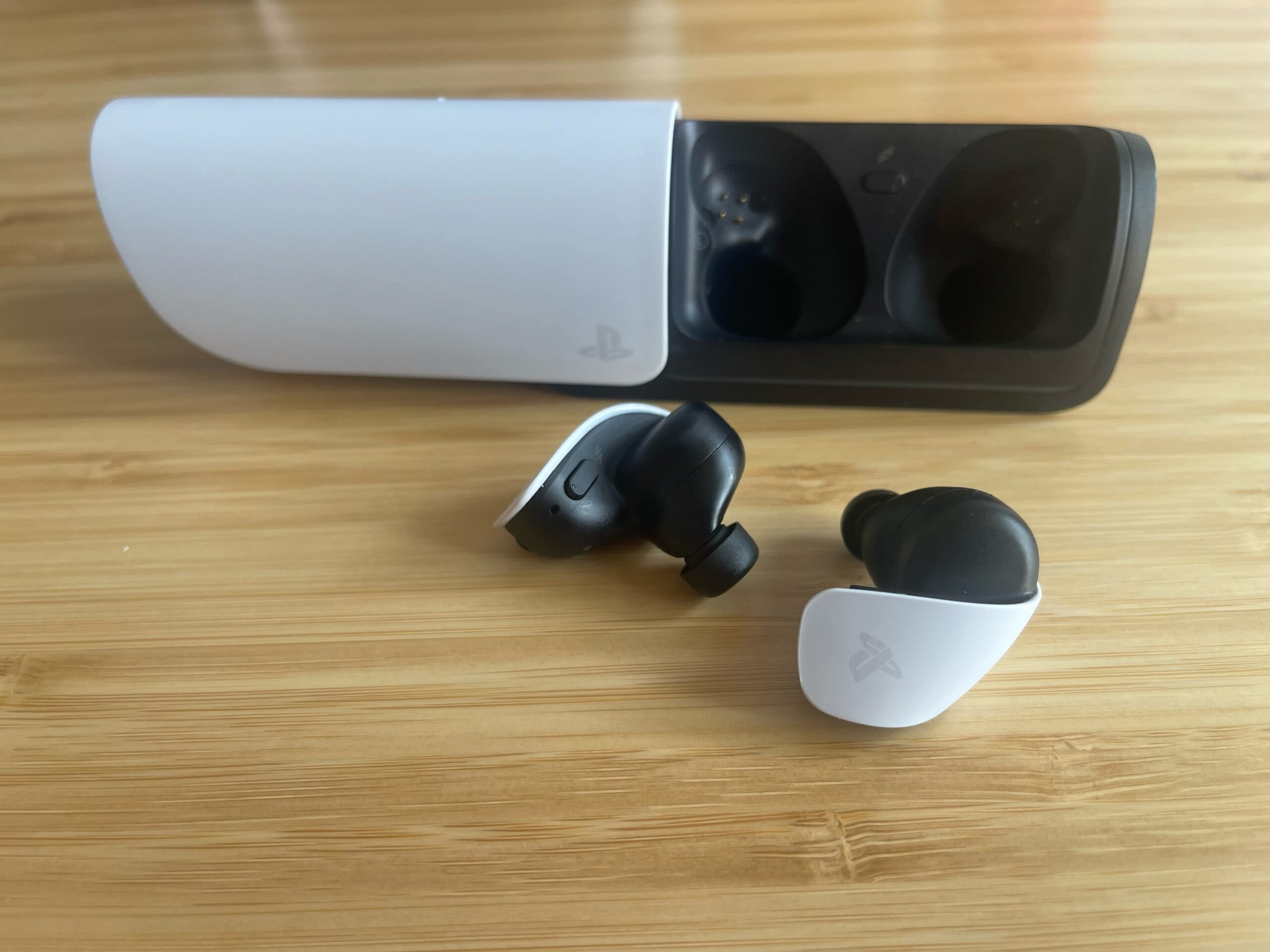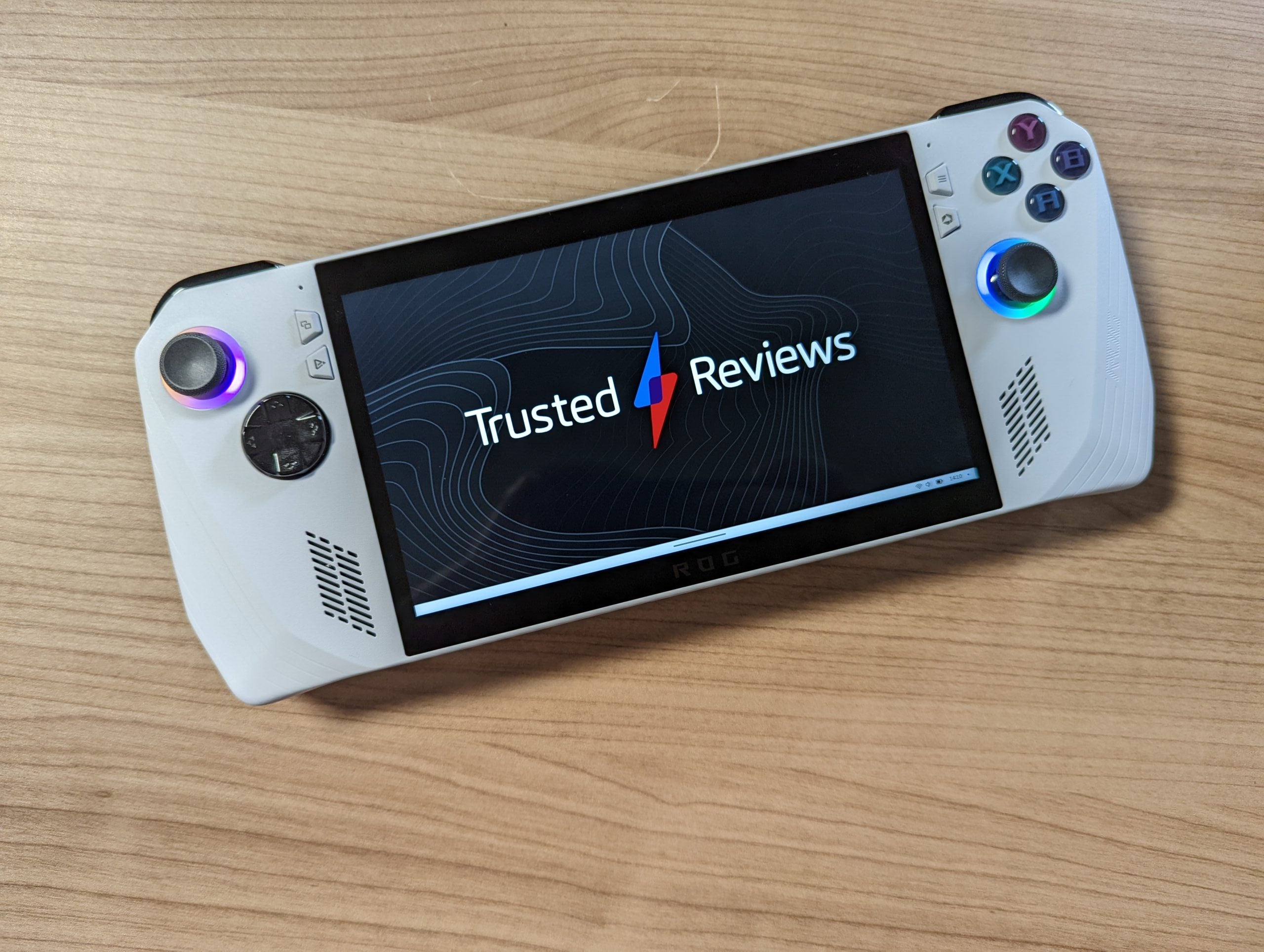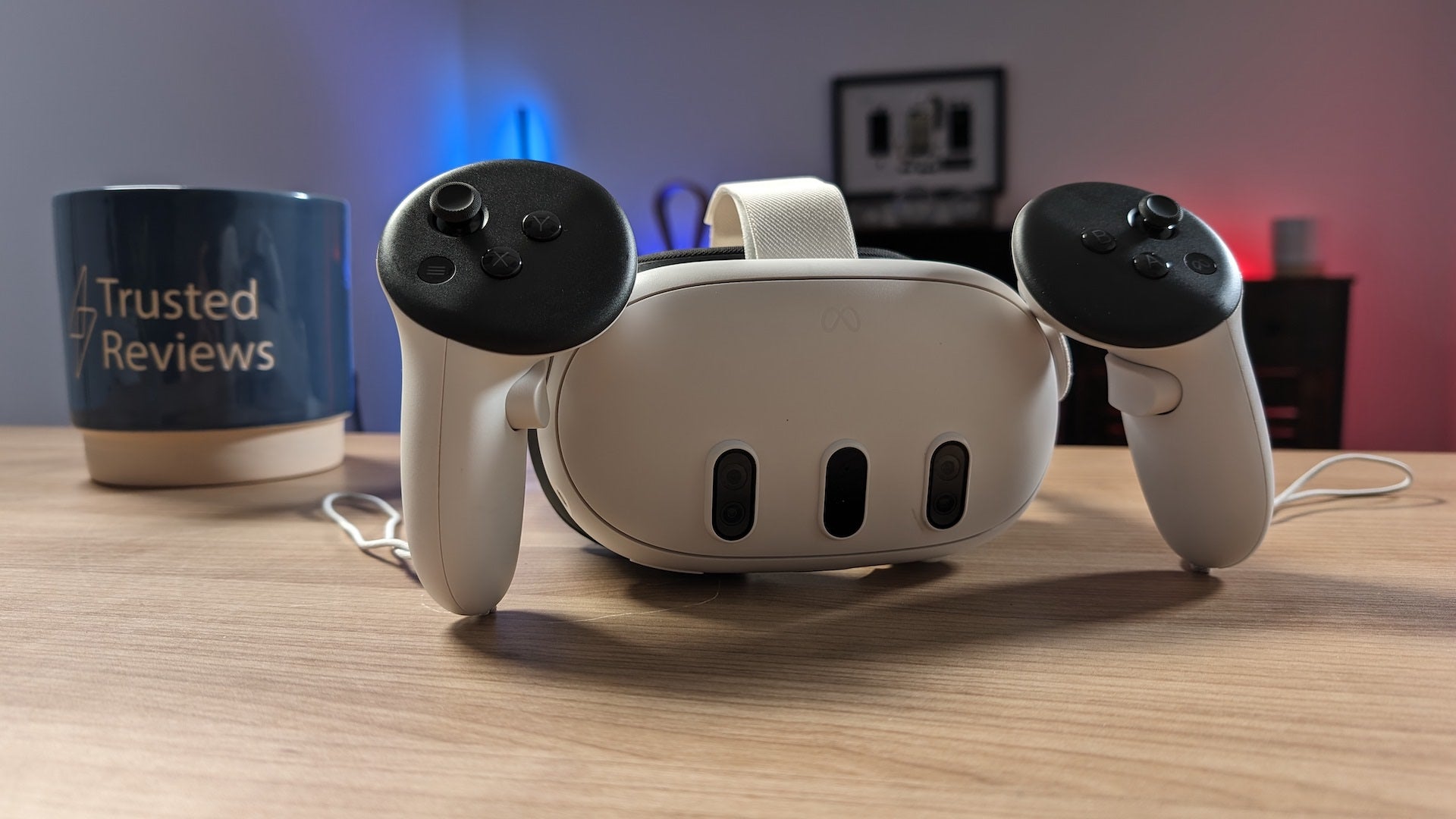Pimax Crystal Review
Stunning PCVR visuals in a pretty substantial package

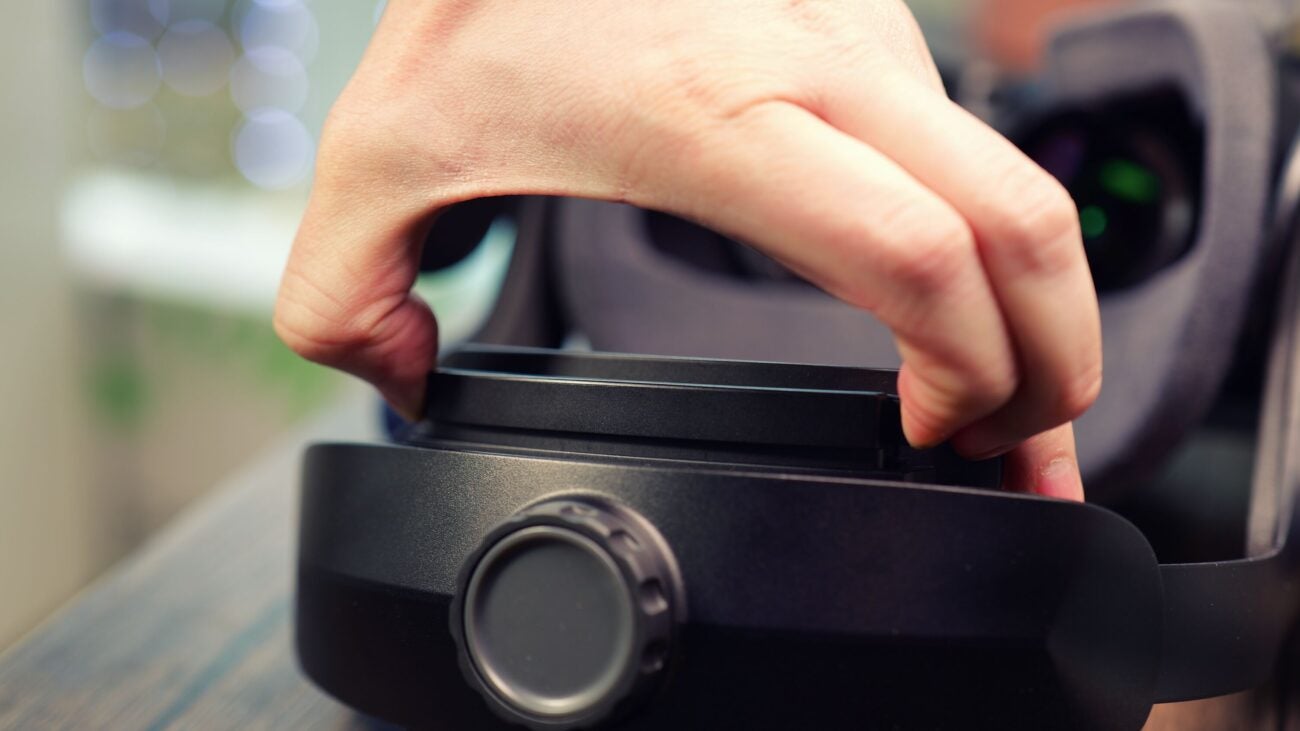






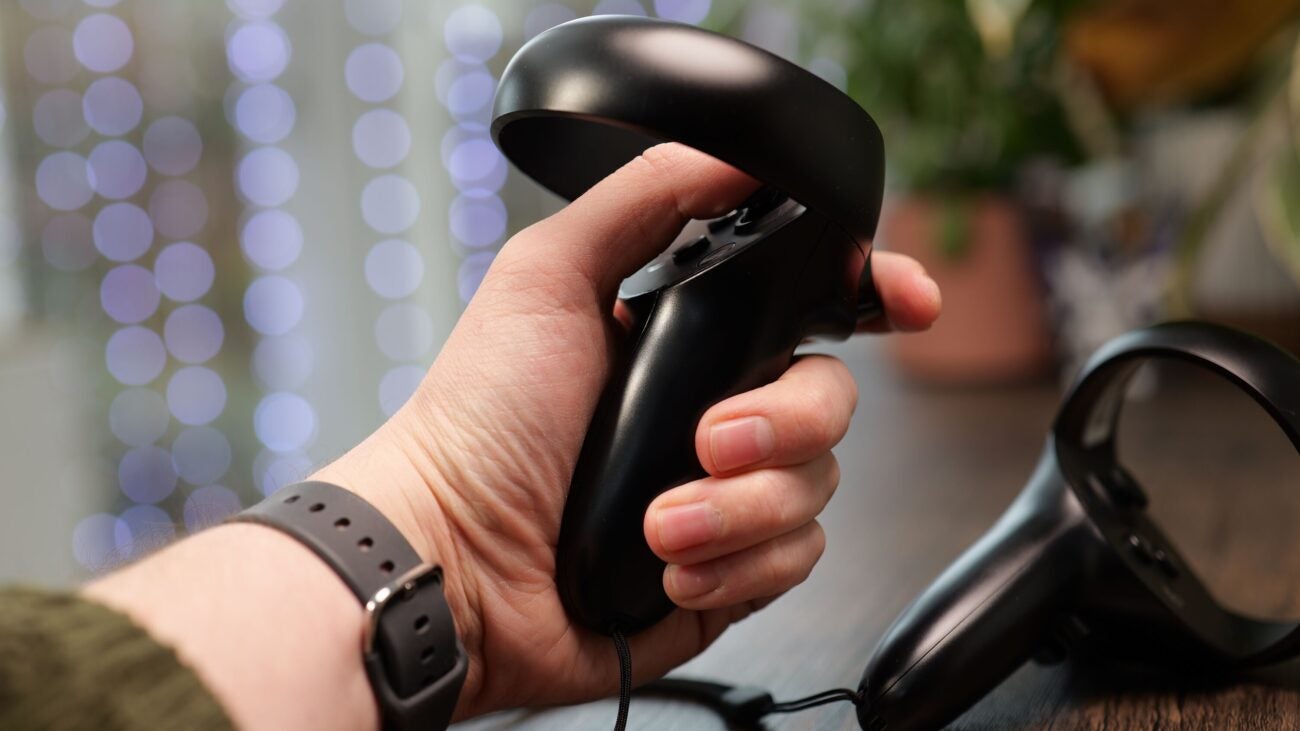



Verdict
If you’re looking for stunning VR visuals, and have a powerful enough gaming rig to handle it, the Pimax Crystal offers image fidelity like no other. It also stands out as the only high-end PCVR headset to offer a standalone mode, although it’s not too impressive in that particular area. The bulky design and weight of the Crystal will limit its mainstream appeal, but for die-hard sim racers, it could be just the right thing.
Pros
- Incredible visual quality with great black levels
- Great audio (using DMAS headphones)
- Better value than some high-end competitors
- No base stations required
Cons
- Gigantic and heavy design
- The battery system is frustrating
- Standalone mode is unimpressive
- No mixed reality functionality
Key Features
- Exceptional visualsWith high-resolution QLED panels, MiniLED backlighting and impressive aspheric lenses, the Pimax Crystal provides an image like no other headset. It’s sharp and the black levels are amazing.
- Eye-trackingAlthough it took a while for the software to land, eye tracking is now fully supported, and Crystal users can benefit from foveated rendering, automatic IPD adjustment and more.
- Versatile designThere’s a bit of a jack-of-all-trades approach to the Pimax Crystal design; not only is it a high-end PCVR headset, but it can also work completely standalone thanks to the built-in XR2 chip. The chassis is modular and upgradable, too.
Introduction
Pimax is a company known for its high-end PCVR headsets, and typically, they value visual fidelity above all else. This means that you sometimes end up with a comically large headset, but with stunning visuals that make all the heft worth it.
The brand’s latest headset, the Crystal, is similar, but it offers more versatility than ever before with integrated standalone functionality, inside-out tracked controllers and even eye tracking.
The Pimax Crystal initially launched in the summer of 2023, and it was a bit of a rocky start. There were numerous delays in the lead-up, and when it did eventually ship, some of its biggest features were yet to be enabled, like the standalone mode and eye tracking. Now, though, Pimax has delivered on all of its promises, and we’re testing the Crystal with all of its key features enabled.
The Pimax Crystal retails for £1699 / $1599 / €1499, so it definitely falls into the premium category, but it justifies its price by offering some of the highest-resolution panels available and unmatched versatility. Unlike most of its rivals, it’s a complete system and doesn’t need Vive Base Stations to work, though a lighthouse-compatible face plate is available as an optional accessory.
I was excited to find out how the Crystal compares to the competition, and I really wanted to know if it’s worth over three times as much as the Meta Quest 3. If you’re curious, too, then read on as we explore it all.
Design and fit
- 960g including battery / 1.1kg with DMAS earphones
- Automatic motorised IPD adjustment (58-72mm)
- Halo strap with integrated audio
There’s no getting around the fact that the Pimax Crystal is a massive headset. It looks like something a mech pilot would wear in an anime, and the angular chassis sticks out quite far from your face. It’s pretty heavy, too, tipping the scales at over a kilo when the optional high-fidelity earphones are attached.
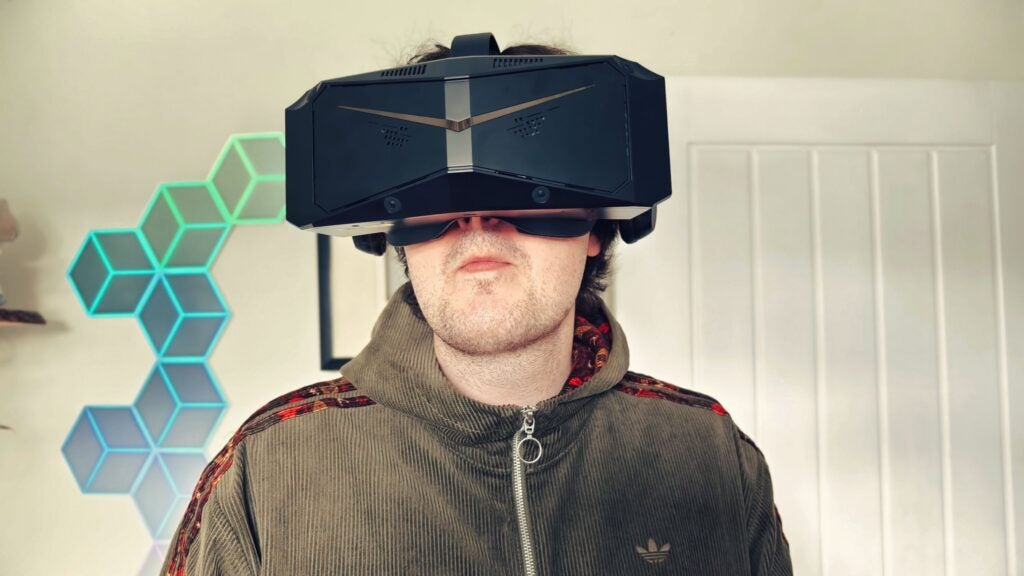
Those complaining about the weight of the Apple Vision Pro would be in for a shock with this one, but in fairness, Pimax has been thoughtful with its design to take some of the pressure away from your face.
Firstly, there’s a rear-mounted battery pack, which acts as a counterbalance, and an elasticated top strap that helps distribute the weight. Finally, there’s an optional extra-large foam piece that rests on your forehead and takes some weight away from your cheekbones, which I chose to use throughout my testing.
There’s a rigid plastic halo strap, a bit like the Elite Strap for the Meta Quest 3, only it’s larger to match the considerable girth of this headset. It tightens with a knob at the rear, and two straps run from the front to the back, one is made from elastic and the other is rubber. As standard it has near-field speakers built into the strap, but my test unit came with the optional DMAS earphone upgrade, which is a $99 add-on.
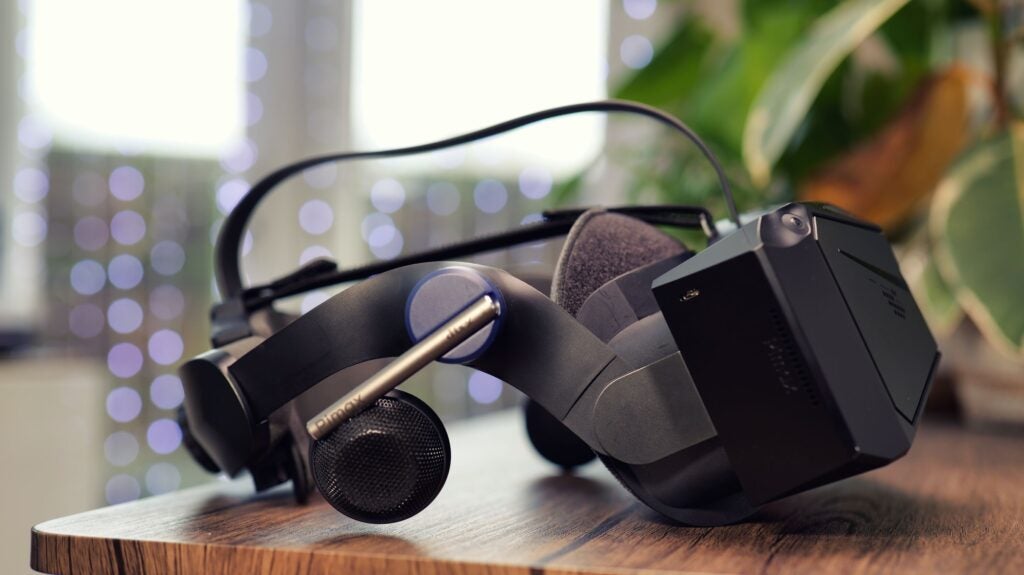
These earphones can swivel and extend to be positioned next to, but not touching, your ears. The system works well, but I can’t help but wish they were a little more rigid in their positioning, as I had to adjust them back into place every time I put the headset on.
The headset is mostly made from matte black plastic, with a shiny silver V-shaped embellishment on the front panel, and a matching finish on the buttons. The material reminds me of a typical gaming laptop from a few years back, before aluminium lids became the standard. It doesn’t feel cheap, per se, but it doesn’t feel premium, either, and it’s an absolute fingerprint magnet. To me, the Quest 3 looks much more high-end, which is ironic, given it retails for about a third of the cost.
The Pimax has standalone functionality, but in order to use it with a PC, you’ll need to be tethered with a cable. There’s a large proprietary connector next to the left ear, it’s a little fiddly to connect, but it’s a rock-solid connection when it’s in place. On the PC side, the Crystal needs two USB-A ports and a DisplayPort connector. However, I found that a high-quality HDMI to DisplayPort adapter will work too, if you want to use the headset with a powerful gaming laptop, for example.

Controllers
- Classic Rift Touch controller layout
- Inside-out tracking
- Built-in batteries with USB-C charging
The controllers are very similar to those that came with the Quest 2 and have an almost identical button layout and familiar tracking rings. They’re finished in smooth matte black plastic like the headset, which is fine, but feels very basic. A little texture would go a long way to making these feel more refined. For example, the Quest 3 controllers have a kind of egg-shell feel to them, and it just makes them feel better in the hand.


The controllers are functional but unremarkable. The buttons are a little mushy, and the triggers have slightly more resistance than I’m used to, but both work fine and they never held me back in gameplay. All the usual touch/proximity sensors are present, too, and 90% of the time, they’ll work with Quest button mapping for PCVR titles.
When I first tried the Crystal, the controller tracking wasn’t the most reliable, and it was very noticeable in fast-paced games like Beat Saber. However, after numerous firmware updates, things are feeling a lot better. I still think they’re slightly less accurate than the Quest controllers, but it’s closer than ever on the current firmware.

Despite these niggles, I am very glad that the Crystal comes with controllers. It’s so much easier to get set up than a headset like the Varjo Aero or Bigscreen Beyond, which both require Vive base stations and controllers to function – and if you don’t already have them, that’s a significant additional cost.
The controllers have built-in batteries and charge via USB-C. I love to see this, as many controllers, including the Quest 3 controllers, still use AA batteries. They definitely don’t last as long as my AA battery-powered controllers, but I don’t have to go hunting for batteries when they die, and that’s a win in my book.
Specs and features
- Qualcomm Snapdragon XR2 /PC VR engine dual-processor chips
- 8GB RAM and 256GB storage
- 120Hz Tobii eye tracking
One of the most unique aspects of the Pimax Crystal is that it functions as both a high-end PCVR headset and a standalone system. When I first tested the headset in the summer of 2023, the standalone mode had yet to be enabled, and it was taking so long that I began to question if it would ever come to fruition.

Sure enough, it eventually arrived in October 2023 launching with 11 titles in the store, and there are now 12 available, by my count. It’s a very small library, and it’s missing most of the games that draw people toward platforms like the Quest 3 and Pico 4. Still, there’s a handful of fun games like Hitstream and Pierhead Arcade, as well as X-Fitness and OpenBrush if you’re looking to get a workout in or create some art.
The Crystal is powered by a Snapdragon XR2, just like the Quest 2 and Pico 4. It’s a capable chip, but when paired with such high-resolution optics, you’ll notice a big dip in quality compared to using the headset with a PC. Still, the tracking works well, and performance in this mode is decent.
Honestly, it’s just a bit of an odd proposition. I suppose it could be useful if you want to take the Pimax Crystal to a friend’s house and give them a taste of VR without needing to lug your gaming rig over, but otherwise, the library is too limited and the headset is too bulky to be considered as a standalone solution.
Another standout feature is eye tracking, something that you’ll only find on high-end headsets like the Meta Quest Pro and Apple Vision Pro. This too was missing at launch, but it arrived in October alongside the standalone mode. With the latest firmware, every time you put the headset on, it measures your IPD and automatically adjusts the lenses for perfect clarity, it’s pretty slick.
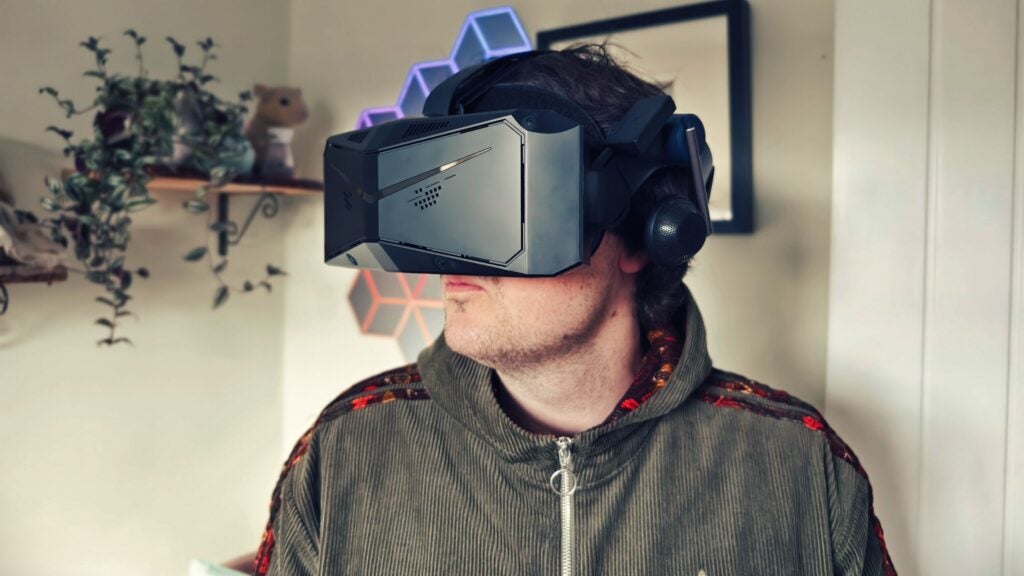
For my needs, the main advantage of eye tracking is that it enables foveated rendering. This is a technique that renders the area of the screen that you’re looking at in the highest fidelity while applying a subtle blur to the areas in your periphery. I’m running an RTX 3070, which is no slouch, but it can struggle with the high resolution of the Pimax Crystal displays. This technique takes some load off the GPU, allowing me to enjoy higher framerates and increase the fidelity of my games. It’s great.
Of course, eye tracking also works for social experiences like VR Chat. Other players will be able to see your pupils move and your eyes blink, which adds another layer of reality to your avatar. This isn’t something that I’m too familiar with, but for some, it’s a huge deal. If you’re interested in this aspect, it’s worth noting that the Crystal doesn’t currently support winking, or closing your eyes halfway. Though developers are actively working on a solution.
Image quality
- 2880 x 2880 resolution per eye, 90/120Hz
- QLED panels with MiniLED backlighting
- 130-degree field of view, aspheric optical lenses
So long as you have a suitably powerful PC to run it, the Pimax Crystal is capable of providing astonishing visuals. It’s one of the highest-resolution headsets available today, only surpassed by the Apple Vision Pro, and has a similar pixel density to the pricey spatial computer, too.

It uses QLED panels with miniLED backlighting to achieve impeccable black levels. There are over 2000 dimming zones per eye, which is about four times the amount offered by the Meta Quest Pro, meanwhile, the Quest 3 doesn’t have local dimming at all.
I tested the Quest 3 and the Pimax Crystal side by side to get a good idea of the difference in quality, and it really is night and day. I’ve never had any complaints about the image quality of the Quest 3, and it’s still my go-to headset, but taking off the Crystal and putting on the Quest is like switching from a 4K OLED to a 720p LCD.
The Pimax Crystal prioritises image quality over everything, and the results are superb. The aspheric lenses have a large sweet spot, and there’s basically no glare or god rays to speak of. The only optical artefact I noticed was some slight chromatic aberration toward the edges of the display. The face gasket completely blocks out ambient light, and it’s extremely immersive.

The Crystal looks so good that it just makes you want to load up every VR title in your library and just gawk at the scenery. Kayak VR and Half-Life: Alyx were the two titles that impressed me the most, but everything looks impressive, even relatively simple-looking games like I Expect You To Die have a level of sheen that you can’t achieve with most other headsets.
The only minor disappointment for me was the field of view. It’s still good, but it’s a significantly narrower FOV than the Pimax 8KX, and barely any wider than the Quest 3. It’s very easy to forget about it as soon as you’re immersed in a game, though, and lenses that support a wider FOV should be available as an additional purchase at some point in the near future.
Battery life
- Battery required to run in tethered PC VR mode
- 4 Hours per charge, plus hot-swap functionality
- Longer battery life with powered USB hub
Since the Pimax Crystal can be used standalone, it needs a battery system. However, the frustrating part is that it requires a charged battery to be used as a PC VR headset, too. And while some standalone headsets will maintain their charge when tethered to a PC, the Pimax Crystal will drain, even if you’re using a powered USB hub, which now comes included with the kit.

Since I’ve had my test unit for a while, it didn’t come with this USB hub, and that means I can get about four hours of playtime per battery. With the powered hub attached, that playtime is extended to 6-8 hours, but obviously it’ll have no effect in standalone mode.
Two batteries come in the box, along with an adapter to charge them via USB-C. The headset has a tiny 120mAh battery built-in, and this allows you to hot-swap between the two batteries, if you’re quick enough. Unfortunately, that’s a big “if”, as the battery packs are incredibly hard to remove.
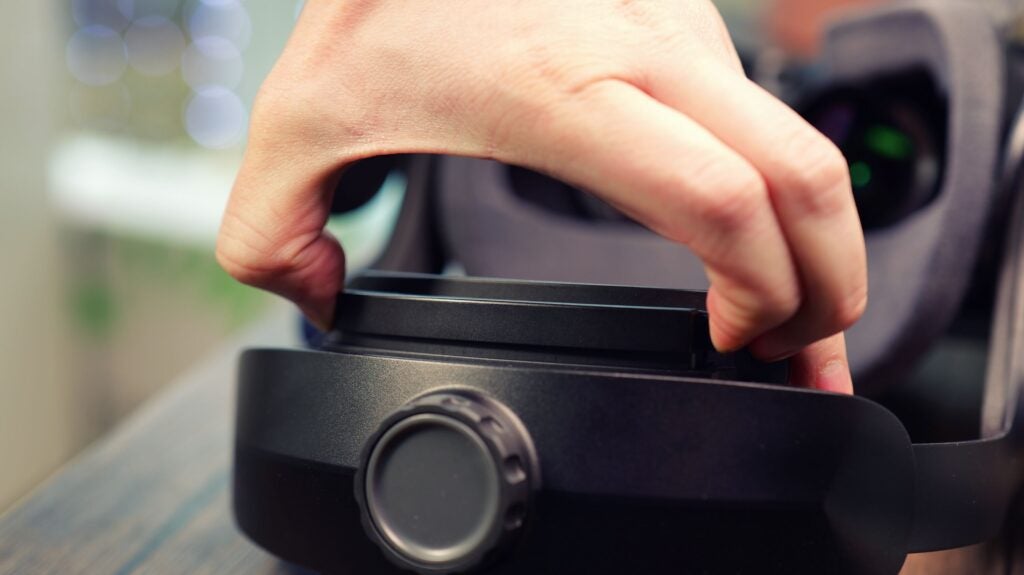
There are two plastic tabs to depress on either side of the battery, and you have to push them so hard that it feels like you’re about to break something. Those with dainty fingers are going to have a horrific time trying to swap batteries. It’s the single most frustrating thing about the Crystal. Of course, if you’re never playing for more than six hours at a time, as most of us aren’t, it might not be something that you ever need to worry about.
Latest deals
Should you buy it?
You want ultimate image fidelity
Simply put, the Pimax Crystal provides the best image quality of any VR headset that I’ve strapped to my head. If that’s what you’re looking for, this could be the one for you.
You want something lightweight and comfortable
The main thing that stops me from using the Crystal more often is how heavy and bulky it is. It’s just not practical when you want to have a quick bash on Beat Saber, it’s more suited to seated experiences like sim racing.
Final Thoughts
I’m not really the target demographic for the Pimax Crystal; my favourite VR experiences are games like Pistol Whip and Beat Saber, which require you to flail about energetically. The Pimax Crystal, with its size and weight, just isn’t suited to these types of games. Instead, it’s perfect for flight sim enthusiasts or sim racers, who are usually seated, and just want the best possible visuals to immerse them in the game.
The latter scenario is where the Crystal truly shines. It offers the best image I have ever seen through a VR headset, and if that’s what you’re after, it’s definitely worth considering.
Now that the Varjo Aero has been discontinued, there’s not a lot of competition around this price point, either. The upcoming Somnium VR1 will reportedly cost much more with similar specifications, and the Bigscreen Beyond is just the polar opposite in terms of design. Meanwhile, the Vision Pro is in a whole different price class, and will likely never work with a PC.
Honestly, I don’t think the standalone functionality should factor into the equation. It’s just too limited in its current state to be of much use to anyone. So that leaves us with a bulky PCVR headset with stunning visuals, eye tracking and convenient controllers. Despite some design frustrations, I think it delivers enough to be worth its asking price. For me personally, I’ll be sticking to something more svelte, with fewer wires, like the Meta Quest 3.
How we test
When testing a VR headset, we make sure to try out a variety of games and apps. We evaluate various aspects, such as the design, fit, screen quality, battery life and the feature set.
Tested a variety of AR and VR titles
Used games and apps to benchmark performance
FAQs
No, the headset and controllers both offer inside-out tracking capabilities.
Currently, there are only 12 titles available on the Pimax Crystal’s standalone app store.

